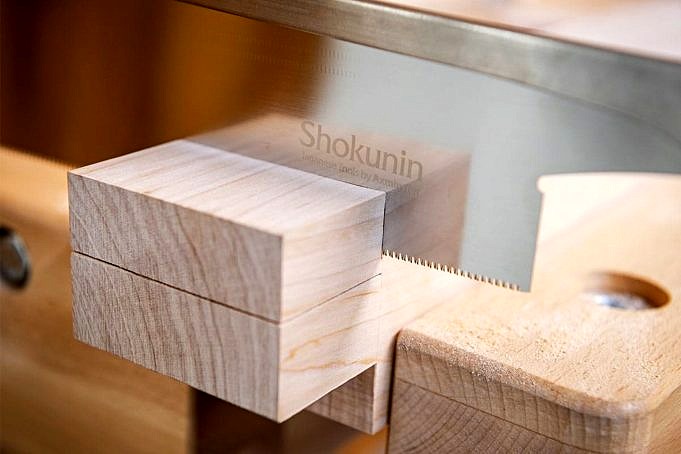Published
Japanese saws are the ideal tools for working with and shaping fine wood and soft plastics. They arent meant for just professionals either, these tools are suitable for all levels of craftsmen as long as they are aware of the materials theyre working with.
These saws are more unique than traditional saws. This is why many consumers overlook them. You’ll be asking yourself why you haven’t used these saws more often than traditional Western handsaws.
And with the information on the top Japanese saws for 2022 in this guide, youre going to know some important things to look for when you walk into a hardware store or start browsing online.
Finding Your Next Japanese Saw: A Buyers Guide
Japanese saws are not only efficient and time-saving but also extremely useful in completing machines jobs faster and using less electricity. You can also achieve smoother, more precise cuts with these saws than you would with traditional handsaws.
A good Japanese saw will save you time and money in the long-term.
You do need to know about some things to look out for though, there are a lot of products in the market – and its important to find a quality tool. This guide will help you to be more informed before you go to a hardware store, or add something to your online shopping basket.
Types Of Japanese Saws
Dozuki
Because of its stiff rib, this tool doesn’t flex and is very similar to a Western-back saw. Dovetails and joinery are possible with the dozuki.
Ryoba
This tool consists of crosscut teeth and rip-cut teeth, which makes it a great general-purpose saw.
Kataba
This versatile type of Japanese saw has a shape similar to the dozuki, but its back isnt as rigid. You can have both rip- and crosscut teeth.
Azebiki
This is a two-sized Japanese saw that features curved blades. This saw is perfect for cutting in the middle of panels.
Oga
This tool is too large to be used by one person, and its typically used on large lumber.
Kugihiki
This is also known as a flush-cut saw and is much smaller than other types. It features a very thin and flexible blade, which is ideal for making flush cuts.
Mawashibiki
This tool is almost identical to a typical keyhole saw. Its meant to be used for cutting holes and following tight curves and other hard-to-reach places.
Things To Think About When Buying Japanese Saws
Teeth
The size of the teeth on your Japanese saw should be larger and longer if you need to use the tool for more aggressive purposes. For the first few cuts, smaller teeth will not be suitable. These saws typically have between 22 and 27 teeth per inch.
Handle
This is the area where you will be holding your tool. It is crucial for cutting through wood and other materials. If you dont have a firm grip on the handle, the tool is more likely to slip out of your hands mid-cut and ruin the piece youre working on. This could even lead to serious injuries. Ideally, your Japanese saw should come with a comfortable grip made of either plastic or wood.
Blade
Thick blades are better for sawing. Before picking up a Japanese saw though, you should decide on what youre going to be using the tool for, and only then should you choose the type of blade. Additionally, you should also keep blade replacements with you in case one accidentally snaps.
In 2022, Elite Japanese Saws Are Worth Thinking About
Although this Suizan option is a traditional one, it’s incredibly original in its design. It has nine rip cuts and 15 crosscuts per inch, making it great for cutting softwood, and its pretty awesome for hardwood and carpentry, too. Combining two kinds of blades on each side gives this tool easy and efficient handling.
The multi-edged design makes this saw easy to store and will save you from buying separate saws for rip and cross-cutting.
This blade is made from 0.02-inch thick steel which increases its accuracy. The product comes with a vinyl cover as well as replaceable blades. We chose this option as the best overall because of its stellar functionality and design.
Pros
- Multi-purpose, multi-edged tool
- Ideal for hardwood and soft materials
- Thin blades for greater accuracy
- Includes a vinyl cover and replaceable blades
Cons
- Low handle grip
The Qihong two-in-1 saw features triple-cut, 18 TPI saw teeth that can be used for cross-cutting and six TPI to ten TPI saw teeth for cutting. All the teeth are made of hardened SK5 steel for increased durability and are great for cutting through bamboo, timber, logs, PVC and ABS pipes, and plywood. They measure 0.023 inches thick and have a blade length of 25 cm. This allows for extremely precise cutting.
The steel this option is made of is rustproof and flexible enough to be used in various cutting positions. The thin kerf also provides an additional advantage in different cutting situations.
Pros
- Requires minimal effort for cuts
- Multipurpose, rust-proof SK5 steel
- Thin teeth for precise and smooth cutting
- Two-handed grip with a long handle
- Comes with a safety saw cap
Cons
- Assembly instructions not included
For those who are just starting out with Japanese saws, the Mini Dozuki Panel Saw from Okada would be a great choice. It is small and compact, and it is used primarily for cutting panels or veneers. To make the initial cuts, the woodpecker hook is located at the tip.
The product features a metal backbone, which is where the name dozuki comes from. The blade measures 15 cm in length and the handle measures 37 cm. This product also comes with a hook-type replacement blade, making it super easy to put on the saw and take it off.
Pros
- Compact and portable
- This is a great way to make starting cuts
- Hook-type replacement blades included
- Extremely sharp



